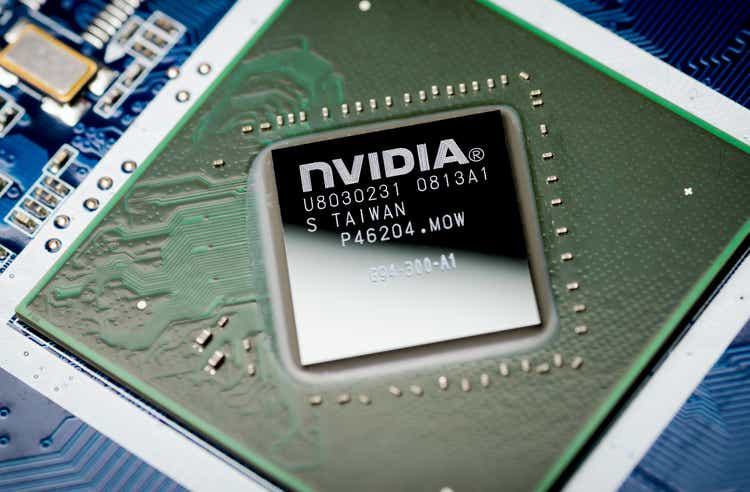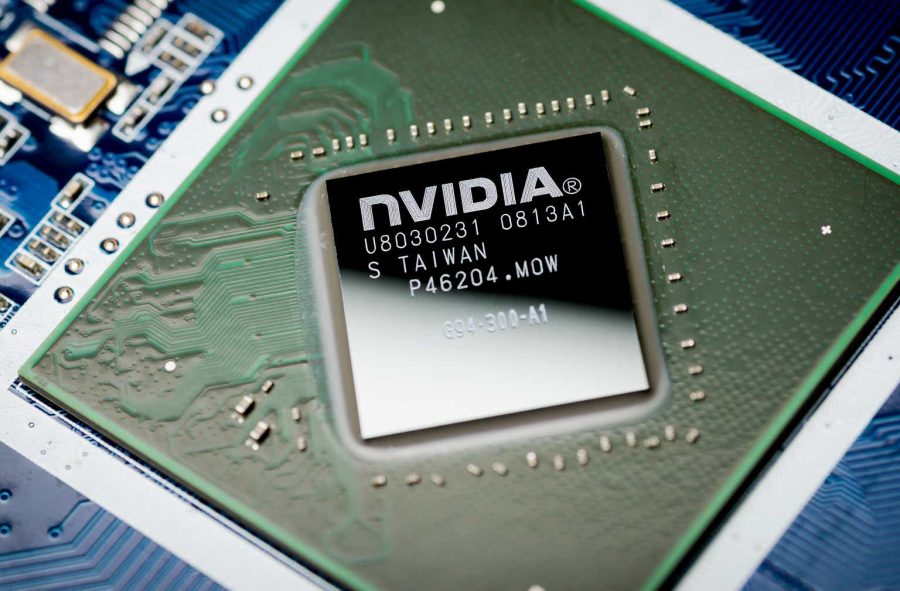Summary:
- Nvidia stock price has soared, making it the most valuable company on Earth in the middle of 2024, as measured by market cap.
- The speculative investing in NVDA stock has been fueled by the potential of artificial intelligence technology to reshape the information sector of the economy.
- Since NVDA’s market cap peaked on June 20, 2024, we’ve seen signs the conveyance effect is kicking in.
Antonio Bordunovi
We’re in the midst of one of the great stock market stories of all time. The soaring stock price of Nvidia (NASDAQ: NASDAQ:NVDA) to become the most valuable company on Earth in the middle of 2024, as measured by its market capitalization, is one that market historians will study for ages.
In terms of recent market history, the rise of NVDA is most similar to the Apple (NASDAQ: AAPL) dividend speculation bubble of early 2012. During that event, the stock price of Apple soared in the early months of 2012 as speculation built Apple would soon re-initiate a regular dividend for its shareholders, powering the rise of the S&P 500 (Index: SPX) as the component weighting of Apple stock within the index inflated as investors piled into the stock, peaking in March 2012.
That speculative bubble went on to dissipate during the next several months, through a phenomenon we call the conveyance effect. After Apple announced its plans to resume paying dividends to its shareholding owners, many stockholders sold their shares while Apple’s stock prices was still buoyed by the speculation that caused it to rise. But instead of pocketing their profits, they reinvested them in other companies that make up the S&P 500 index.
In doing so, much of those gains were conveyed to the rest of the S&P 500, even though Apple’s stock price and component weighting within the index fell during the deflation phase of that bubble event.
In 2024, the rationale behind the speculative investing in NVDA’s stock is different, as speculation in the stock has been fueled by the potential of artificial intelligence technology to reshape the information sector of the economy. The resulting rise in NVDA’s market capitalization can be seen in the following interactive chart.
Since NVDA’s market cap peaked on June 20, 2024, we’ve seen signs the conveyance effect is kicking in. Here’s Capital Spectator’s James Picerno arguing now is the time for investors to “rebalance” their portfolios, though he doesn’t specifically cite the run-up in NVDA’s market valuation:
By nearly any measure you cite, US equities are enjoying a stellar run. Despite numerous global risks, investor sentiment for American shares is resilient. The question, as always, is when is it timely to take some of the winnings and redeploy to other assets classes?
There are countless ways to engage in opportunistic portfolio rebalancing analytics, but a good way to start is by profiling performance. For US equities, the case for tamping down expectations looks persuasive. To the extent that expected return evolves inversely with trailing performance, recent history provides a baseline for thinking about risk.
Meanwhile, the view that the bear-market for bonds is over is attracting more attention. The future’s uncertain as always, of course, but one can argue that the foundation is in place for a round of portfolio rebalancing.
Then again, at least one Wall Street trading desk did specifically cite the run-up in technology stocks like NVDA as a reason to take profits and reinvest elsewhere:
Goldman’s trading desk summed up the market theme perfectly today: “sell tech and buy everything else”…
Then again, they’ve already been doing that for at least a couple of months. The question now is, how many more investors will adopt the strategy now that NVDA has achieved its lofty valuation?
About the Chart
We calculated NVDA’s approximate market cap by multiplying the index’s market cap as of June 30 for each year from 2015 through 2023 as reported by YCharts by the stock’s component weight within the S&P as reported by Slickcharts and captured by the Wayback Machine at the following dates:
- June 28, 2015
- July 4, 2016
- June 16, 2017
- June 20, 2018
- July 19, 2019
- June 22, 2020
- June 23, 2021
- June 27, 2022
- July 7, 2023
This method should closely approximate NVDA’s market capitalization at the mid-point of each year from 2015 through 2023, though the results are subject to error because of stock price changes between these dates and June 30 of these years. For 2024, we multiplied Slickcharts’ estimated market cap of $45.851 trillion by Slickcharts’ reported peak component weight for NVDA of 7.25% on June 20, 2024 to obtain the result presented in the chart.
Since that date, Nvidia’s stock price has experienced considerable volatility, so the approximate value we’ve shown for 2024 may be quite different from where it will settle at the end of the month.
Disclaimer: Aside from long positions in funds that track the S&P 500 index, we don’t hold any position of any kind in either NVDA or AAPL, which we find to be interesting because of their influence on the index.
Editor’s Note: The summary bullets for this article were chosen by Seeking Alpha editors.
